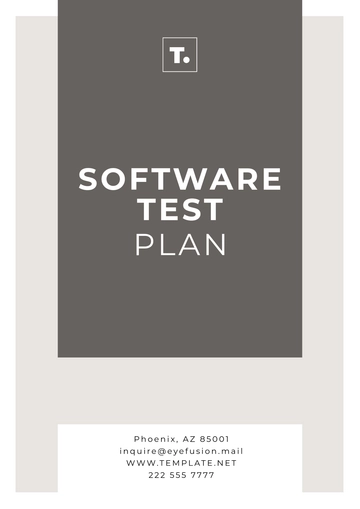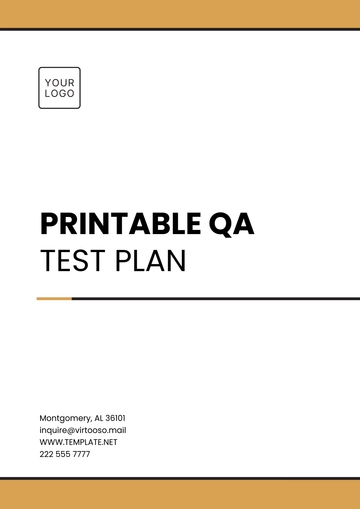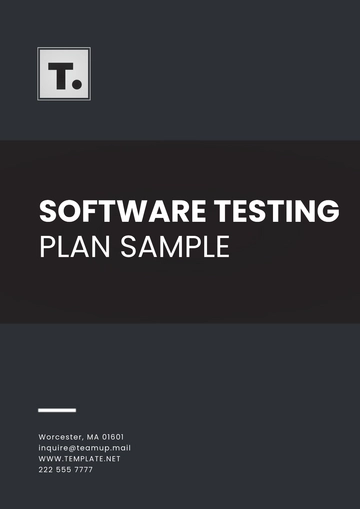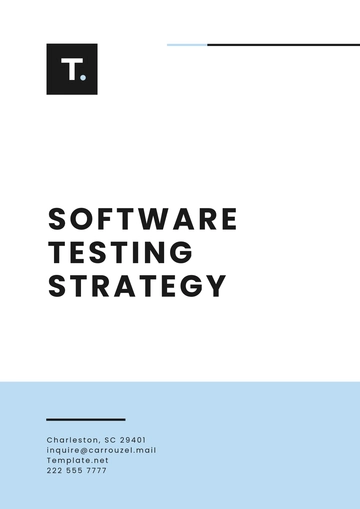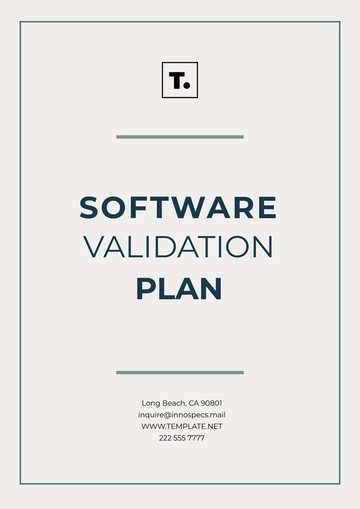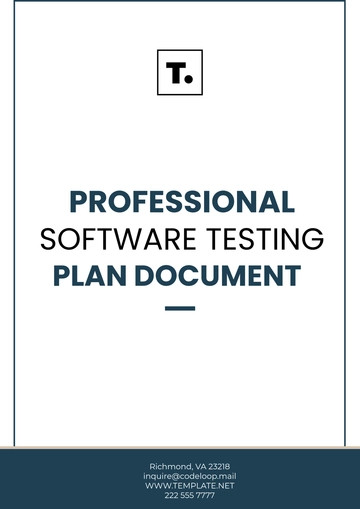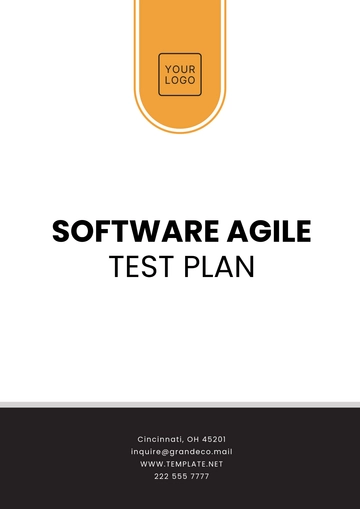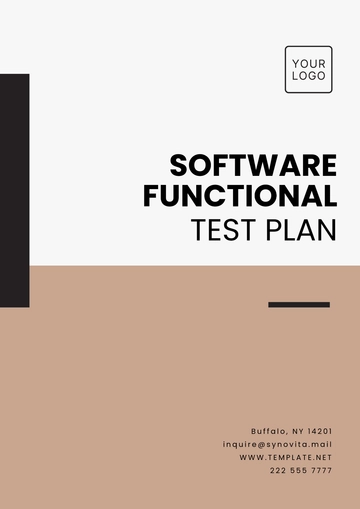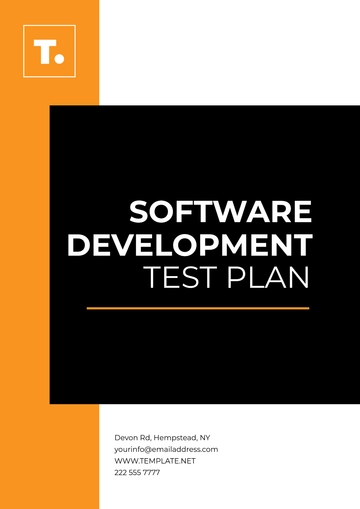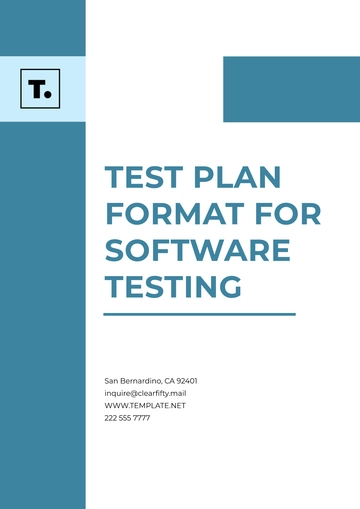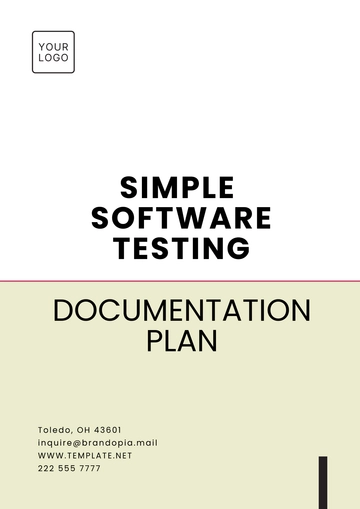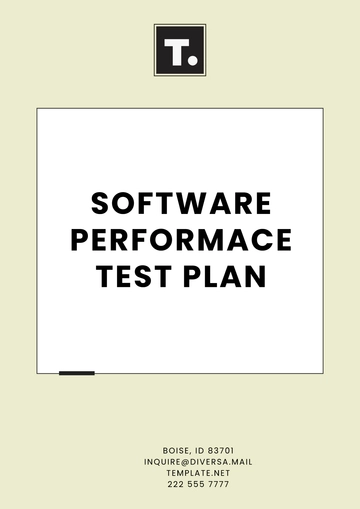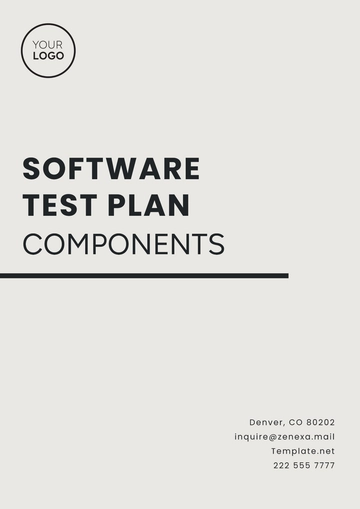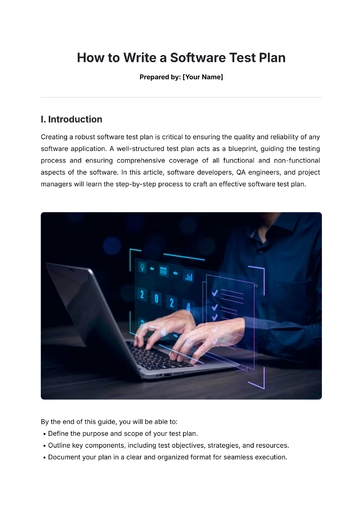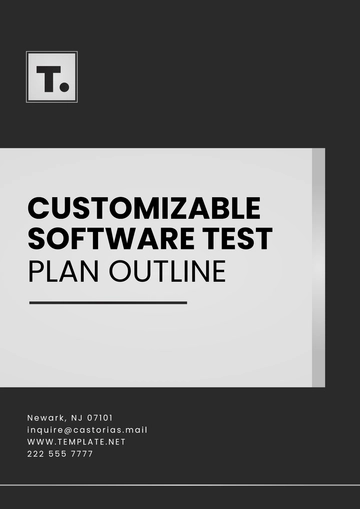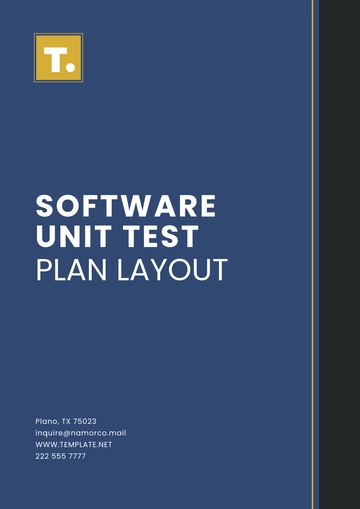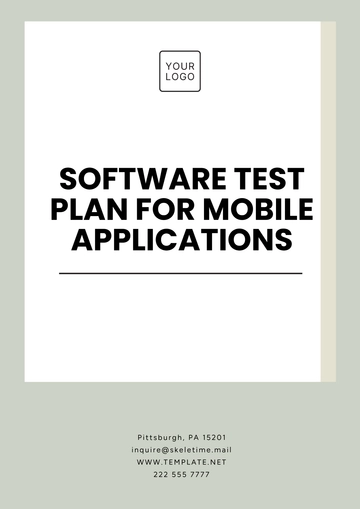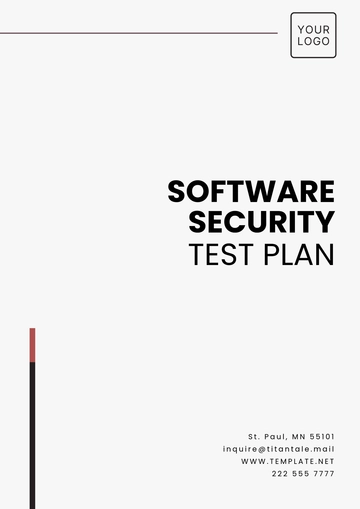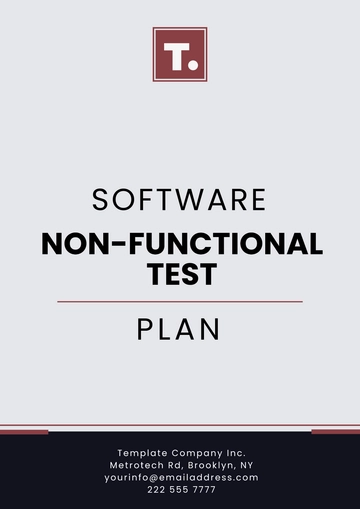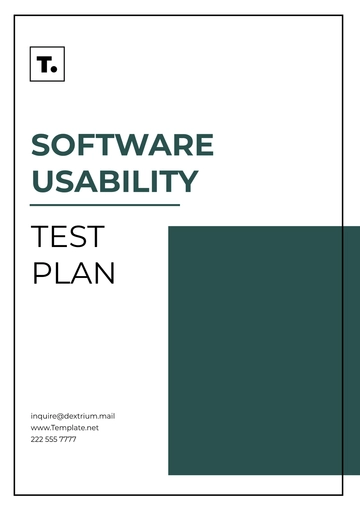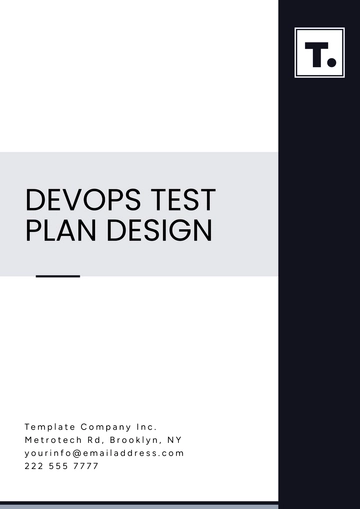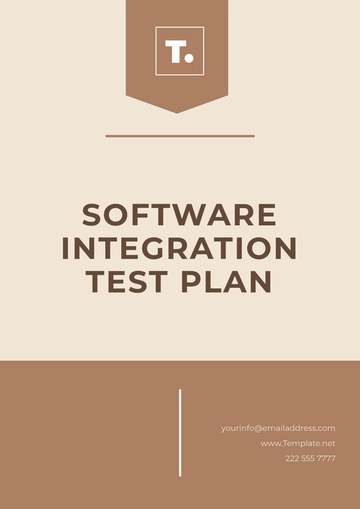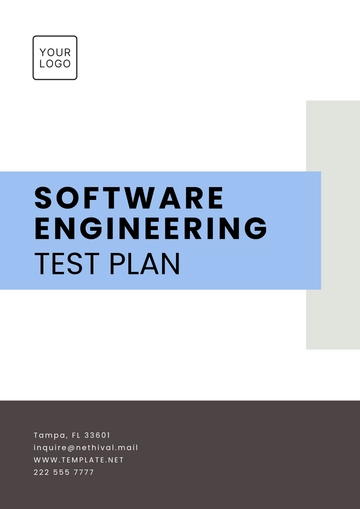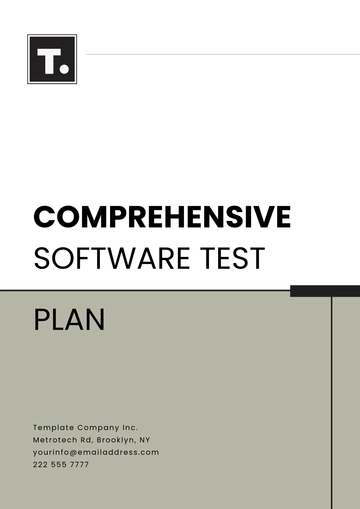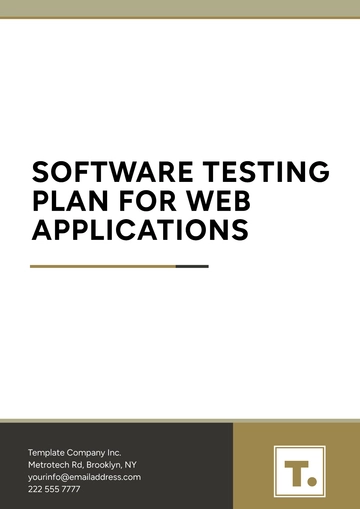Free Professional Software Testing Plan Document
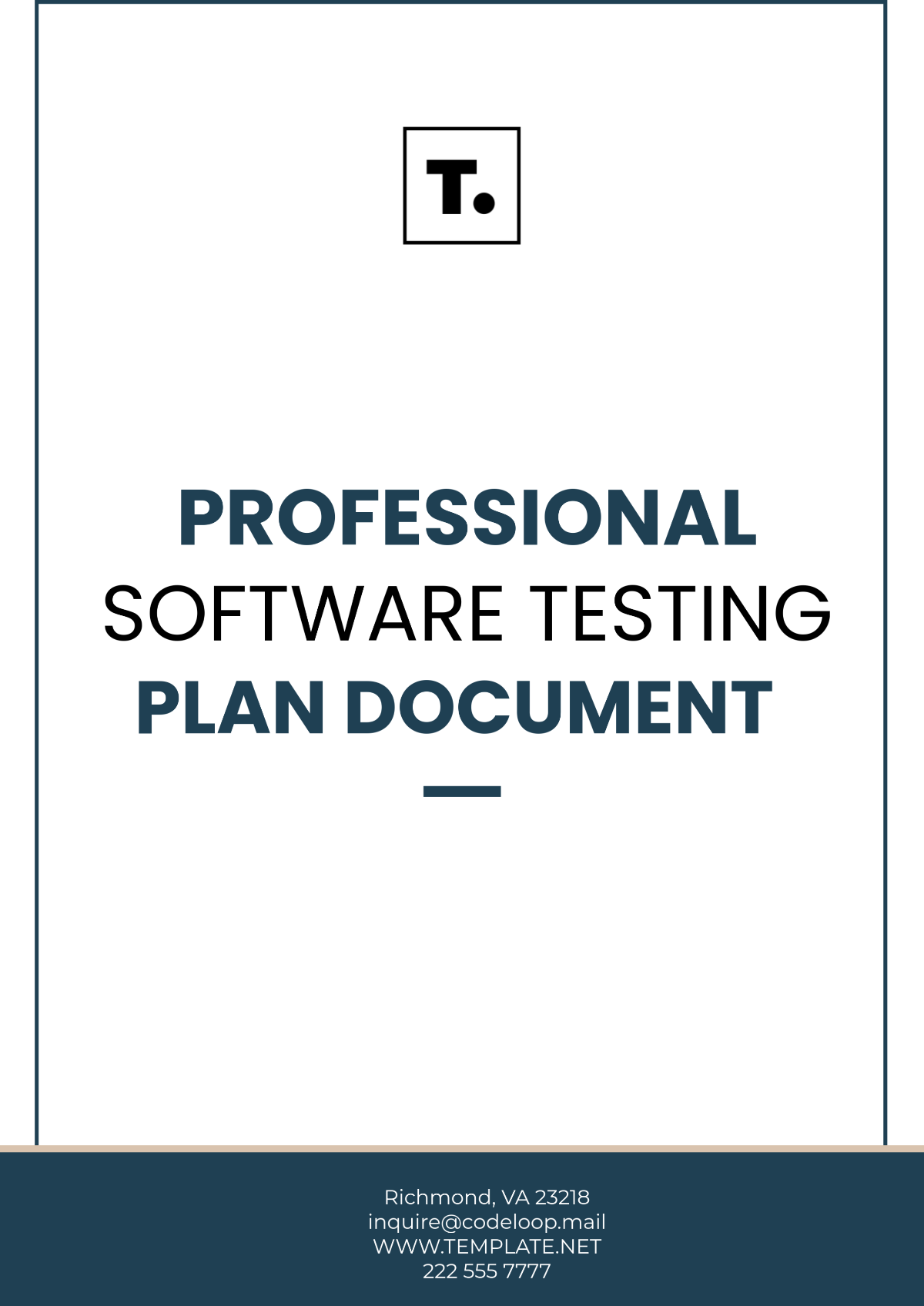
Prepared by: | [Your Name] |
Company: | [Your Company Name] |
Department: | [Your Department] |
Date: | [Date] |
1. Introduction
Software testing is an essential and integral part of the software development life cycle, aimed at ensuring the delivery of high-quality, reliable, and user-friendly software products. This plan provides a comprehensive strategy for executing software testing activities, ensuring that all testing phases are effectively structured, managed, and aligned with the overall project goals.
2. Objectives
The primary objectives of this software testing plan are as follows:
To establish a systematic approach to software testing that guarantees the detection of defects and verification of software functionality.
To ensure the software meets quality standards and performs according to specified requirements and user expectations.
To optimize testing resources and timelines while ensuring comprehensive coverage across all software components.
To facilitate transparent communication between stakeholders regarding testing progress, results, and issues.
3. Scope
This testing plan applies to all software testing activities for the duration of the project. It encompasses all phases of testing, including planning, execution, defect management, and reporting. The scope includes, but is not limited to:
Test planning and design
Types of testing and testing levels
Resource allocation
Testing environment setup
Test execution and defect tracking
Reporting and communication
Risk management
4. Testing Strategy
4.1 Types of Testing
A range of testing types will be implemented to ensure comprehensive evaluation and coverage of all software aspects:
Unit Testing: Verifying the correctness of individual units or components of the software. Unit tests will be written and executed by developers to ensure that each module functions as intended.
Integration Testing: Testing the interactions between integrated units/modules to identify any issues in their combined functionality. This phase ensures the seamless integration of different software components.
System Testing: Validating the entire software system to verify that it meets the specified requirements. This includes testing the system's overall behavior, performance, and reliability in a controlled environment.
User Acceptance Testing (UAT): Conducted with real users or stakeholders to confirm that the software meets their needs and business requirements. UAT ensures that the software is ready for deployment in the production environment.
Performance Testing: Assessing the software’s scalability, load handling capacity, responsiveness, and stability under varying levels of stress and usage. This testing ensures that the system can perform well under real-world conditions.
4.2 Testing Levels
Testing will be conducted at multiple levels to ensure comprehensive and systematic coverage of the application’s features and functionality:
Component/Unit Level Testing: Ensures that individual components function as expected.
Integration Level Testing: Verifies that integrated components work together seamlessly.
System Level Testing: Assesses the complete software system against functional and non-functional requirements.
Acceptance Level Testing: Focuses on validating that the software is ready for use in the real-world environment and meets end-user expectations.
5. Testing Environment
The testing environment will be configured to closely replicate the production environment. This will include:
Test Data: Representative of real-world data to ensure accurate testing results.
Servers & Infrastructure: Emulating the production environment to ensure that the software performs consistently in the final deployment setup.
Network Configurations: Including network traffic and bandwidth considerations to test software performance under different conditions.
Browsers & Platforms: Ensuring compatibility across multiple platforms and devices, simulating user interactions across various environments.
6. Resources
A skilled and dedicated team will be required to successfully execute the software testing plan. Key resources include:
Testers: Competent professionals with experience in manual and automated testing.
Testing Tools: Automation tools, defect tracking systems, performance testing tools, and test management systems.
Infrastructure: Dedicated hardware and software resources to perform tests, including test servers, network configurations, and testing environments.
Adequate resource allocation will ensure smooth execution of testing activities within the defined timelines.
7. Test Deliverables
The following key deliverables will be produced throughout the testing process:
Test Plans: Detailed documentation outlining the testing strategy, objectives, scope, resources, schedules, and risk management strategies.
Test Cases: Specific conditions or variables to be tested, including expected results.
Defect Reports: Detailed records of any issues or defects found during testing, including severity, reproduction steps, and suggested fixes.
Test Summary Reports: High-level reports summarizing the outcomes of testing, including defect statistics, test coverage, and final assessment of software quality.
8. Roles and Responsibilities
To ensure a successful testing process, roles and responsibilities will be clearly defined for all involved parties:
Test Manager: Oversees the overall testing process, ensures effective communication between teams, manages resources, and monitors testing progress.
Test Engineers/QA Analysts: Develop and execute test cases, report defects, and validate software functionality across various testing levels.
Development Team: Collaborates with the testing team to resolve identified defects, implements fixes, and supports the testing process.
Stakeholders/Business Analysts: Participate in UAT and provide feedback to ensure the software meets business and user needs.
9. Schedule
A detailed testing schedule will be developed, outlining the specific timelines for each testing phase, key milestones, and deadlines. The schedule will align with the overall project timeline to ensure that all testing activities are completed prior to release.
The schedule will include:
Unit testing deadlines
Integration testing periods
System testing windows
UAT and performance testing phases
10. Risk Management
Risk identification, assessment, and mitigation strategies will be integrated into the testing process. Potential risks include:
Resource constraints (e.g., limited test environments or skilled testers)
Delays in development impacting testing schedules
Insufficient test coverage leading to undetected defects
A risk register will be maintained to document, track, and mitigate identified risks. Regular risk assessments will ensure that issues are proactively addressed to minimize their impact on the testing process.
11. Conclusion
This Software Testing Plan is designed to ensure the delivery of high-quality software that meets user expectations and adheres to business requirements. By implementing a structured, detailed testing strategy, this plan aims to identify and resolve defects efficiently, ensuring that the final product is both functional and reliable. Successful execution of this plan will facilitate the delivery of a high-performing, user-friendly software solution and contribute to the overall success of the project.
- 100% Customizable, free editor
- Access 1 Million+ Templates, photo’s & graphics
- Download or share as a template
- Click and replace photos, graphics, text, backgrounds
- Resize, crop, AI write & more
- Access advanced editor
Simplify testing documentation with Template.net’s Professional Software Testing Plan Document Template. Customizable and editable, this template is perfect for creating detailed and structured test plans. Editable in our AI Editor Tool, it’s easy to adjust for any project. Download this template to ensure professionalism and clarity in your software testing processes.
You may also like
- Finance Plan
- Construction Plan
- Sales Plan
- Development Plan
- Career Plan
- Budget Plan
- HR Plan
- Education Plan
- Transition Plan
- Work Plan
- Training Plan
- Communication Plan
- Operation Plan
- Health And Safety Plan
- Strategy Plan
- Professional Development Plan
- Advertising Plan
- Risk Management Plan
- Restaurant Plan
- School Plan
- Nursing Home Patient Care Plan
- Nursing Care Plan
- Plan Event
- Startup Plan
- Social Media Plan
- Staffing Plan
- Annual Plan
- Content Plan
- Payment Plan
- Implementation Plan
- Hotel Plan
- Workout Plan
- Accounting Plan
- Campaign Plan
- Essay Plan
- 30 60 90 Day Plan
- Research Plan
- Recruitment Plan
- 90 Day Plan
- Quarterly Plan
- Emergency Plan
- 5 Year Plan
- Gym Plan
- Personal Plan
- IT and Software Plan
- Treatment Plan
- Real Estate Plan
- Law Firm Plan
- Healthcare Plan
- Improvement Plan
- Media Plan
- 5 Year Business Plan
- Learning Plan
- Marketing Campaign Plan
- Travel Agency Plan
- Cleaning Services Plan
- Interior Design Plan
- Performance Plan
- PR Plan
- Birth Plan
- Life Plan
- SEO Plan
- Disaster Recovery Plan
- Continuity Plan
- Launch Plan
- Legal Plan
- Behavior Plan
- Performance Improvement Plan
- Salon Plan
- Security Plan
- Security Management Plan
- Employee Development Plan
- Quality Plan
- Service Improvement Plan
- Growth Plan
- Incident Response Plan
- Basketball Plan
- Emergency Action Plan
- Product Launch Plan
- Spa Plan
- Employee Training Plan
- Data Analysis Plan
- Employee Action Plan
- Territory Plan
- Audit Plan
- Classroom Plan
- Activity Plan
- Parenting Plan
- Care Plan
- Project Execution Plan
- Exercise Plan
- Internship Plan
- Software Development Plan
- Continuous Improvement Plan
- Leave Plan
- 90 Day Sales Plan
- Advertising Agency Plan
- Employee Transition Plan
- Smart Action Plan
- Workplace Safety Plan
- Behavior Change Plan
- Contingency Plan
- Continuity of Operations Plan
- Health Plan
- Quality Control Plan
- Self Plan
- Sports Development Plan
- Change Management Plan
- Ecommerce Plan
- Personal Financial Plan
- Process Improvement Plan
- 30-60-90 Day Sales Plan
- Crisis Management Plan
- Engagement Plan
- Execution Plan
- Pandemic Plan
- Quality Assurance Plan
- Service Continuity Plan
- Agile Project Plan
- Fundraising Plan
- Job Transition Plan
- Asset Maintenance Plan
- Maintenance Plan
- Software Test Plan
- Staff Training and Development Plan
- 3 Year Plan
- Brand Activation Plan
- Release Plan
- Resource Plan
- Risk Mitigation Plan
- Teacher Plan
- 30 60 90 Day Plan for New Manager
- Food Safety Plan
- Food Truck Plan
- Hiring Plan
- Quality Management Plan
- Wellness Plan
- Behavior Intervention Plan
- Bonus Plan
- Investment Plan
- Maternity Leave Plan
- Pandemic Response Plan
- Succession Planning
- Coaching Plan
- Configuration Management Plan
- Remote Work Plan
- Self Care Plan
- Teaching Plan
- 100-Day Plan
- HACCP Plan
- Student Plan
- Sustainability Plan
- 30 60 90 Day Plan for Interview
- Access Plan
- Site Specific Safety Plan
